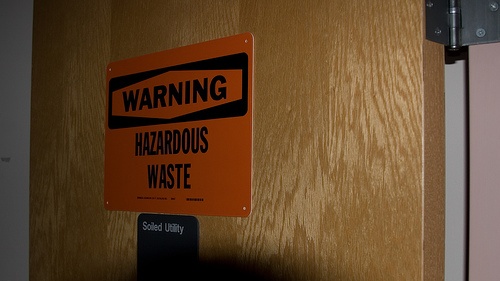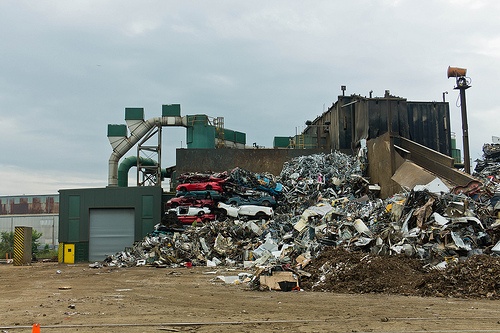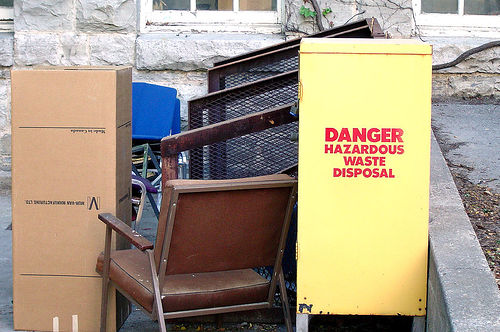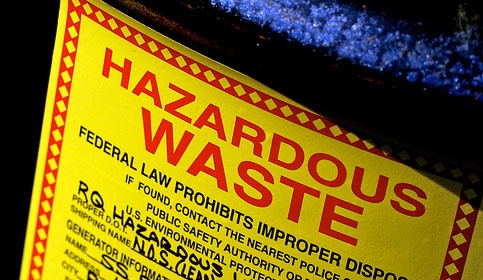On December 7, the US Environmental Protection Agency (EPA) revised the Hazard Ranking System (HRS) it uses to compare site contamination and to designate the most hazardous sites for the National Priority List (NPL) for cleanup. This revision adds “subsurface intrusion” – i.e., intrusion of hazardous liquids such as contaminated groundwater and/or vapors from subsurface chemical contamination into structures – to the potential pathways to public harm evaluated by HRS when evaluating contaminated sites. This represents the first additional pathway added in nearly three decades. The revisions will become effective 60 days after publication in the Federal Register, presumably during the first quarter of 2017.
Read MoreAudit, Compliance and Risk Blog
EPA Adds Subsurface Intrusion to the Superfund Hazard Ranking System
Posted by Jon Elliott on Tue, Jan 10, 2017
Tags: Environmental risks, Environmental, EPA, Hazcom
EPA Proposes First Major Reviews of Existing Chemicals Under the 2016 Amendments to TSCA
Posted by Jon Elliott on Tue, Dec 13, 2016
The Toxic Substances Control Act (TSCA) was enacted in 1976 to develop adequate data regarding the effects of chemical substances and mixtures on human health and the environment, and to prevent unduly hazardous chemicals from entering commercial use. Over the next 40 years the US Environmental Protection Agency (EPA) focused on addressing new chemical substances, and made minimal progress on updating information about the 62,000 chemicals already in commerce when TSCA was enacted, to discern whether those chemicals posed unacceptable hazards. (I summarized basic provisions here). As the exception proving that rule, EPA conducted a decade-long review of asbestos before determining it should be banned, only to have the decision overturned by a federal court finding that the agency hadn’t incorporated adequate cost-benefit analyses.
Read MoreTags: Environmental risks, Environmental, EPA, Hazcom, tsca
The U.S. Environmental Protection Agency (EPA) administers rules governing the import and export of hazardous waste regulated by the Resource Conservation and Recovery Act (RCRA). These rules ensure that the U.S. meets its international responsibilities as a member of the Organization for Economic Cooperation and Development (OECD) by creating national rules that meet agreed-upon OECD standards.
Read MoreTags: Environmental risks, Environmental, EPA, Greenhouse Gas, ghg, Hazcom
U.S. Commission on Civil Rights Criticizes EPA’s Environmental Justice Efforts
Posted by Jon Elliott on Tue, Oct 18, 2016
In September 2016, the U.S. Commission on Civil Rights (Commission) issued its annual “Statutory Enforcement Report for 2016”; this year’s topic is the Environmental Protection Agency’s (EPA’s) efforts to protect and promote “Environmental Justice.” The Commission reviews decades of EPA efforts, and criticizes longstanding inadequacies.
Read MoreTags: Health & Safety, Environmental risks, Environmental, EPA, ghg, Hazcom, RCRA
California Tightens Restrictions On High-Impact Short-Lived Climate Pollutants
Posted by Jon Elliott on Tue, Oct 11, 2016
Attempts to reduce greenhouse gas (GHG) emissions are more complex than they first appear. Reports in the mass media tend to focus on carbon dioxide (CO2). The United Nations Framework Convention on Climate Change (Framework Convention) focuses primarily on six GHGs, including CO2 as well as methane (CH4), nitrous oxide (N2O), hydrofluorocarbons, perfluorocarbons, and sulfur hexafluoride (SF6). Climate change scientists have identified hundreds of GHGs, with widely varying sources, relative contributions to climate change (numerical “global warming potential (GWP)”, where CO2 is defined as 1.0), and total contribution based on emitted volumes.
Read MoreTags: California Legislation, Greenhouse Gas, ghg, Hazcom, climate change
To improve the efficiency of RCRA Corrective Action, in 2014, EPA Regions 3 and 7 began a pilot to implement RCRA Corrective Action using Lean process analysis with the goal of clarifying goals and expectations early in the process. The Lean process is a collection of principles and methods that focus on the systematic identification and elimination of non-value-added activity involved in producing a product or delivering a service to customers. Within the RCRA Corrective Action program, the Lean process was used to remove various redundant steps and frontload goals and expectations through a corrective action framework (CAF), resulting in significant time savings.
Read MoreTags: Environmental risks, Environmental, EHS, EPA, Hazcom, RCRA
The U.S. Environmental Protection Agency (EPA) regulates hazardous wastes under the Resource Conservation and Recovery Act (RCRA). These regulations include a detailed national system governing hazardous waste shipments from generators to offsite management facilities. In October 2012, RCRA was amended by the Hazardous Waste Electronic Manifest Establishment Act, authorizing EPA to implement a national electronic manifest system. In 2014, EPA adopted regulations to govern the new electronic system (I blogged about the rules here), but deferred compliance provisions (including specific electronic formats) while the agency continues to work on its data collection and management system.
Read MoreTags: Environmental, EPA, Hazcom, RCRA
EPA Establishes Formaldehyde Limits For Composite Wood Products
Posted by Jon Elliott on Tue, Aug 30, 2016
EPA has just issued final rules to limit exposure to formaldehyde emissions from plywood and other laminated and composite wood products. The Formaldehyde Emission Standards for Composite Wood Products Act of 2010 (“the Act”, which is codified as Title VI of the Toxic Substances Control Act (“TSCA”)) required EPA to develop these rules. The Act responded to evidence of dangerous emissions from substandard construction products, publicized particularly by health hazards in temporary trailers provided by the Federal Emergency Management Agency (FEMA) to victims of Hurricane Katrina and other natural disasters. The Act established standards based on California rules, and directed EPA to issue nationwide rules by January 1, 2013 to enforce these standards. EPA missed its deadline, but has just announced rules that will become effective after publication in the Federal Register (probably in August 2016).
Read MoreTags: Health & Safety, Environmental risks, Environmental, EHS, EPA, Hazcom
The New TSCA 3 – Adjusting Preemption of State and Local Chemical Regulation
Posted by Jon Elliott on Tue, Aug 23, 2016
This post continues my discussion of the “Frank R. Lautenberg Chemical Safety for the 21st Century Act,” which was adopted in June to revise the 1976 Toxic Substances Control Act (TSCA). In prior posts I summarized changes made to accelerate testing of chemical substances that are already in use in the U.S., and to enhance premanufacture evaluation of new chemicals and significant new uses of existing chemicals. The set of major changes created by the 2016 Amendments addresses TSCA’s preemptive impact – the degree to which EPA actions or inactions under TSCA can restrict states' authority to enact their own regulatory and informational programs. This note addresses preemption.
Read MoreTags: Environmental risks, Environmental, EPA, Hazcom
This post continues my discussion of the “Frank R. Lautenberg Chemical Safety for the 21st Century Act,” which was adopted in June to revise the 1976 Toxic Substances Control Act (TSCA). In the last post I summarized changes made to accelerate testing of chemical substances that are already in use in the U.S., and for which evidence developed since their introduction suggests they may pose an “unreasonable risk” to health or the environment. This “grandfathering” of never-evaluated and potentially hazardous chemicals has been seen as a major weakness. The 2016 Amendments also strengthen the process of evaluation for new chemicals offered for distribution in the U.S. This note addresses changes to these new chemical reviews.
Read MoreTags: Environmental risks, Environmental, EHS, EPA, Hazcom










